- Homepage
- How Much Does It Cost to Replace Siding on a 2000 Sq Ft House?
How Much Does It Cost to Replace Siding on a 2000 Sq Ft House?
Leading provider of replace siding services
Replacing siding on a 2,000 sq ft house typically costs between $22,800 and $64,000, translating to $11.40 to $32 per square foot. This total cost includes removing old siding, materials, labor, and installation. Lower-end costs cover basic materials like vinyl and standard designs, while higher-end costs involve premium materials like fiber cement or wood, custom designs, and additional insulation. Factors influencing the cost per square foot include the type of siding, design complexity, local labor rates, and additional features such as insulation or custom finishes. Proper planning and budgeting for unforeseen expenses are essential to ensure the project stays within the estimated cost range.
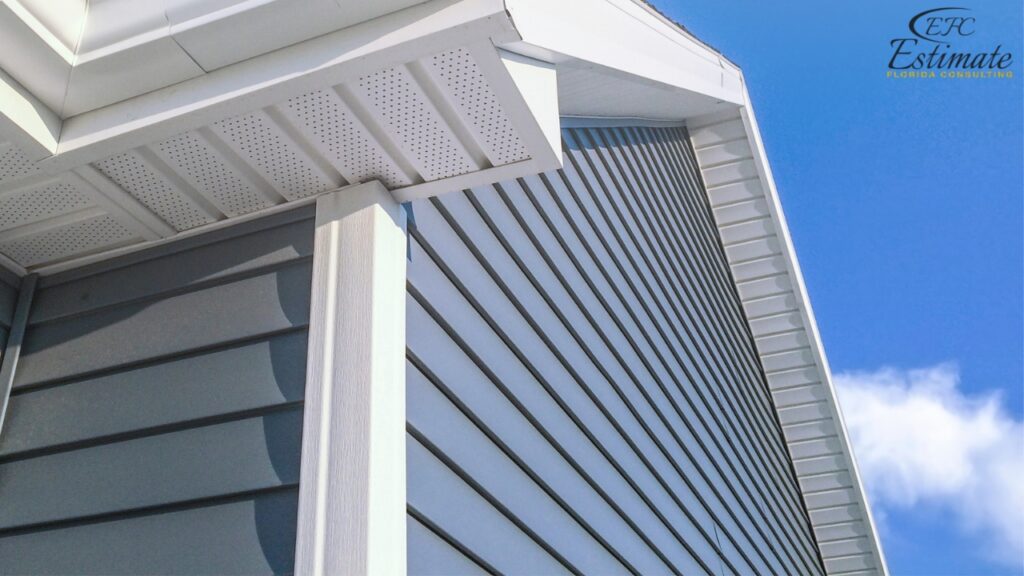
Cost Breakdown for Siding Replacement
Materials
The cost of siding materials can vary widely based on the type, quality, and style of the siding chosen. Here’s a detailed breakdown of typical material costs for a 2000 sq ft house:
Siding Material | Estimated Cost per Sq Ft | Total Cost for 2000 Sq Ft |
Vinyl Siding | $3 – $7 | $6,000 – $14,000 |
Fiber Cement Siding | $6 – $12 | $12,000 – $24,000 |
Wood Siding | $6 – $10 | $12,000 – $20,000 |
Brick Veneer Siding | $10 – $20 | $20,000 – $40,000 |
Stucco Siding | $7 – $14 | $14,000 – $28,000 |
Steel Siding | $8.50 – $14.50 | $17,000 – $29,000 |
Vinyl Siding
Vinyl siding is a popular and cost-effective choice for many homeowners. It offers low maintenance and a variety of styles and colors. The cost of vinyl siding typically ranges from $3 to $7 per square foot. While affordable, it may not offer the same level of durability as some other materials. Vinyl siding is also relatively easy to install, which can help reduce labor costs. Its versatility in design and color options makes it a flexible choice for many types of homes.
We Provide 3D Rendering Services!
For Porcelain Tiles and Other Projects
Turnaround time is 1-2 days.
Win More Projects With Us
Fiber Cement Siding
Fiber cement siding is known for its durability and resistance to fire, insects, and rot. It offers a similar aesthetic to wood siding but with lower maintenance requirements. The cost of fiber cement siding ranges from $6 to $12 per square foot. This option provides excellent durability and a high-end appearance. It can mimic the look of wood, stone, or brick, offering versatility in design. Additionally, fiber cement siding is highly resistant to weather extremes, making it a long-lasting choice for various climates.
Wood Siding
Wood siding provides a natural and classic look but requires regular maintenance, including painting, staining, and sealing, to protect against weather damage and pests. The cost of wood siding ranges from $6 to $10 per square foot. While it offers a timeless aesthetic, it may not be the most practical choice for homeowners looking for low-maintenance options. Wood siding can add a lot of character and warmth to a home, making it a favorite among many homeowners. However, the ongoing maintenance requirements can be time-consuming and costly over the years.
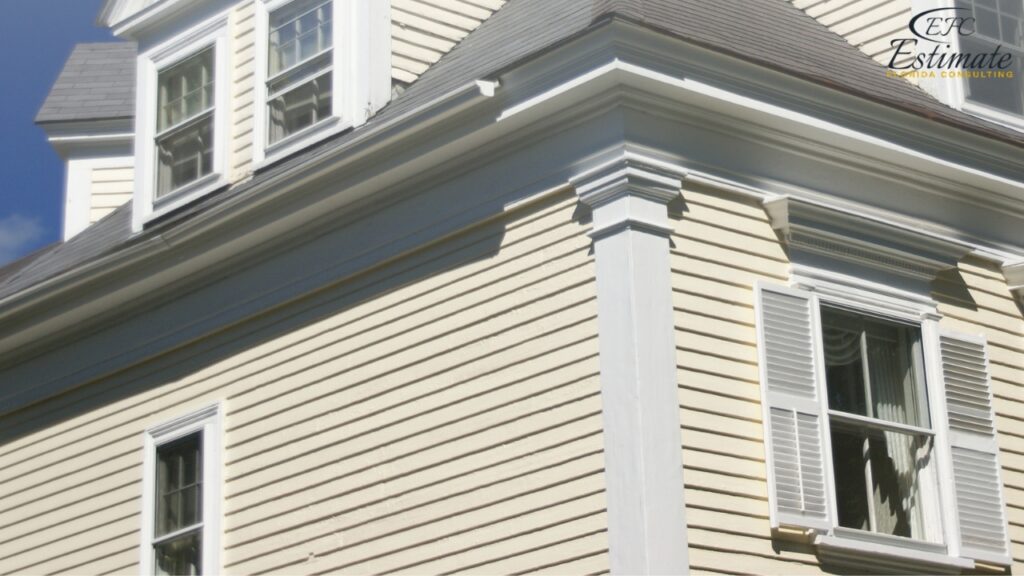
Brick Veneer Siding
Brick veneer siding offers a classic and durable option with excellent fire resistance and low maintenance requirements. However, it is one of the more expensive siding options. The cost of brick veneer siding ranges from $10 to $20 per square foot. This option provides a timeless and elegant appearance that can significantly enhance a home’s curb appeal and value. Brick veneer also offers superior insulation properties, which can help with energy efficiency. The initial investment is higher, but the long-term benefits, including minimal maintenance and high durability, can make it a worthwhile choice.
Stucco Siding
Stucco siding provides a unique and durable finish that is particularly popular in certain regions. It offers good insulation and fire resistance but can be prone to cracking in areas with significant temperature changes. The cost of stucco siding ranges from $7 to $14 per square foot. This option can provide a high-end look and excellent durability when properly installed and maintained. Stucco can be applied in various textures and colors, offering flexibility in design. Its ability to enhance the architectural features of a home makes it a popular choice for Mediterranean and Spanish-style houses.
Steel Siding
Steel siding is known for its exceptional durability and low maintenance requirements. It offers a sleek, modern look while providing robust protection against the elements. The cost of steel siding ranges from $8.50 to $14.50 per square foot. This option provides long-lasting protection and a modern aesthetic. Steel siding is also resistant to pests and fire, making it a safe and secure choice. Its strength and resistance to damage make it an excellent option for homes in areas prone to severe weather conditions.
90% More Chances to Win Porcelain tile Bids with
Our Estimate!
Labor Costs
Labor costs for replacing siding can vary depending on the complexity of the project, the contractor’s rates, and the region. Here’s an estimate of labor costs:
Labor Task | Estimated Cost per Hour | Total Cost for 2000 Sq Ft |
Site Preparation | $50 – $70 | $1,000 – $1,400 |
Siding Installation | $70 – $100 | $14,000 – $20,000 |
Trim and Accessory Installation | $50 – $70 | $1,000 – $1,400 |
Cleanup and Inspection | $40 – $60 | $800 – $1,200 |
Total Labor Cost | $50 – $100 | $16,800 – $24,000 |
Site Preparation
Site preparation involves clearing the area, removing old siding, and ensuring the surface is ready for new siding installation. Proper site preparation can prevent issues such as uneven surfaces or moisture problems, which can affect the siding’s performance and longevity. This stage may also include making necessary repairs to the underlying structure to ensure a stable base for the new siding. Ensuring the site is adequately prepared can also help avoid delays during the installation process. Thorough preparation can mitigate potential complications and ensure that the new siding adheres properly.
Siding Installation
The installation of new siding requires skilled labor to ensure proper alignment, secure attachment, and a neat finish. The cost for this labor can vary based on the complexity of the job and the rates in your area. Skilled installation is vital for the siding to perform as expected, providing protection and enhancing the home’s appearance. Professional installation can also help ensure that the siding’s warranty remains valid. Proper installation techniques are crucial for maximizing the lifespan and effectiveness of the siding.
Trim and Accessory Installation
Installing trim and accessories is necessary to complete the siding installation. This step ensures that all edges and corners are sealed, preventing water infiltration and creating a finished look. Proper installation of trim and accessories is essential for the siding’s overall effectiveness and aesthetic appeal. Trim and accessories can also help protect the edges of the siding from damage and extend its lifespan. The detailed work involved in installing these elements can significantly enhance the overall appearance and functionality of the siding.
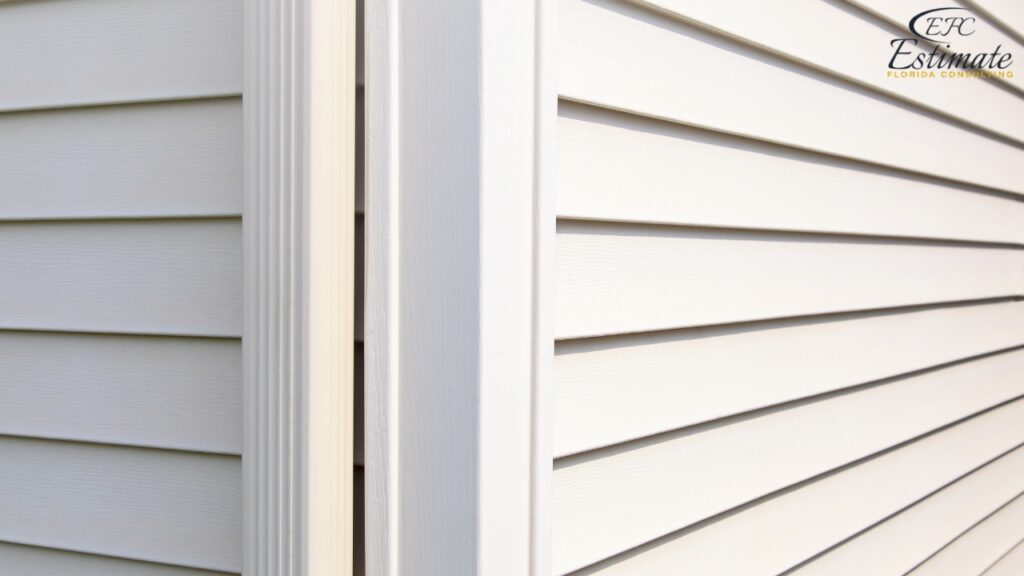
Cleanup and Inspection
After the installation is complete, cleanup and inspection are necessary to ensure the job is done correctly and the site is left tidy. This step includes removing debris, inspecting the installation for any issues, and making any necessary adjustments. A thorough cleanup and inspection ensure that the siding installation meets quality standards and that the site is safe and presentable. This final step also helps ensure that the homeowner is satisfied with the finished project. Addressing any issues promptly can prevent future problems and ensure the siding performs optimally.
Additional Costs
Additional costs can include permits, inspections, and any custom features or finishes. Here’s an estimate of these costs:
Additional Component | Estimated Cost |
Permits and Inspections | $500 – $1,000 |
Custom Finishes | $1,000 – $3,000 |
Miscellaneous Expenses | $500 – $1,500 |
Permits and Inspections
Obtaining the necessary permits and passing inspections are crucial steps in the siding replacement process. These fees can vary depending on local regulations and the complexity of the project. Ensuring that all permits are obtained and inspections passed is essential for compliance with building codes and safety standards. This process can also help avoid potential legal issues down the line. Working with experienced contractors who are familiar with local permitting requirements can streamline this process.
Custom Finishes
Custom finishes can include special coatings, colors, or designs that enhance the appearance of the siding. These finishes can add to the overall cost but provide a unique look and additional protection. Investing in custom finishes can increase the curb appeal and value of your home, making it stand out and offering added durability. Custom finishes can also include treatments that make the siding more resistant to weather and environmental factors. Choosing high-quality finishes can enhance the longevity and performance of the siding, ensuring that it remains attractive and functional for many years.
Miscellaneous Expenses
Miscellaneous expenses can include unexpected costs that arise during the project, such as additional materials, equipment rentals, or unforeseen repairs. Having a contingency budget for these expenses helps ensure the project stays on track and can handle any surprises without significant delays or cost overruns. Properly managing these costs can prevent disruptions and ensure the smooth completion of the project. This category also covers any additional labor required for unforeseen tasks, ensuring that the project can adapt to any challenges that may arise. Being prepared for miscellaneous expenses can help avoid budget overruns and ensure that the project is completed successfully.
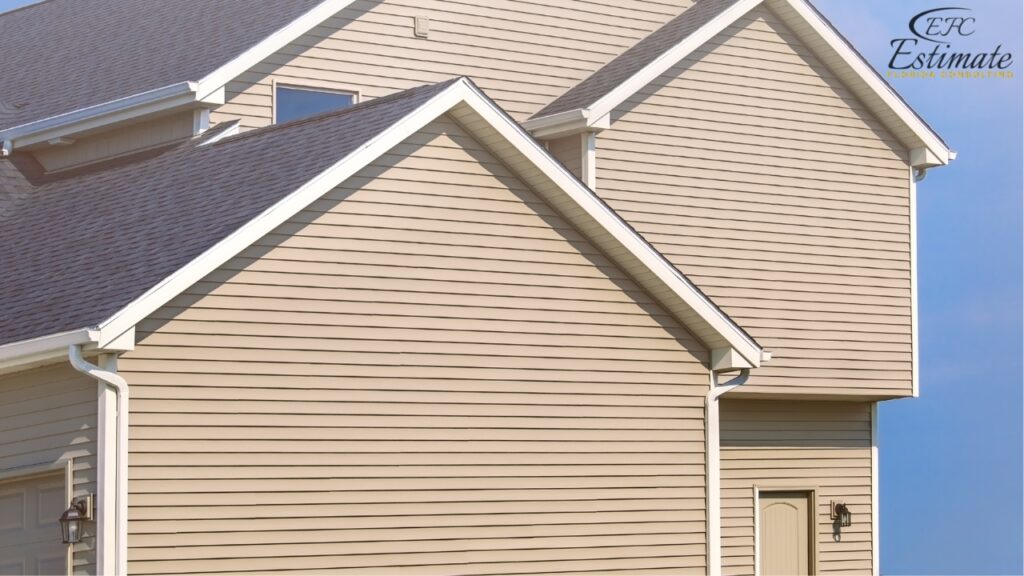
Cost Comparison by Siding Material
Here’s a comparison of the total estimated costs for replacing siding on a 2000 sq ft house, including materials and labor:
Siding Material | Total Material Cost | Total Labor Cost | Total Cost |
Vinyl Siding | $6,000 – $14,000 | $16,800 – $24,000 | $22,800 – $38,000 |
Fiber Cement Siding | $12,000 – $24,000 | $16,800 – $24,000 | $28,800 – $48,000 |
Wood Siding | $12,000 – $20,000 | $16,800 – $24,000 | $28,800 – $44,000 |
Brick Veneer Siding | $20,000 – $40,000 | $16,800 – $24,000 | $36,800 – $64,000 |
Stucco Siding | $14,000 – $28,000 | $16,800 – $24,000 | $30,800 – $52,000 |
Steel Siding | $17,000 – $29,000 | $16,800 – $24,000 | $33,800 – $53,000 |
Cost Factors to Consider
Several factors can influence the overall cost of siding replacement, including:
Home Size and Shape
The size and shape of your home can significantly impact the total cost of siding installation. Larger homes require more materials and labor, increasing the overall cost. Homes with complex shapes, multiple stories, or intricate architectural details may also require more time and specialized skills, further driving up labor costs. The design and layout of the home play a crucial role in determining the amount of siding material needed and the complexity of the installation process.
Regional Labor Rates
Labor rates can vary widely depending on your location. Urban areas with a higher cost of living typically have higher labor rates compared to rural areas. Additionally, the availability of skilled labor in your region can influence costs. Obtaining multiple quotes from local contractors can help ensure you get a competitive price for your siding installation. Regional labor rates are affected by the local economy, demand for construction services, and the availability of skilled tradespeople.
Existing Siding Removal
If your home has existing siding that needs to be removed before the new siding can be installed, this will add to the overall cost. Removal and disposal of old siding can be labor-intensive and may require additional fees for waste disposal. The condition of the existing siding and the ease of removal can also affect costs. Proper removal and disposal of old siding are necessary to ensure a clean and smooth surface for the new siding installation.
Benefits of Replacing Siding
Improved Aesthetic Appeal
Replacing old or damaged siding can dramatically improve the appearance of your home. New siding can give your house a fresh, updated look, making it more attractive and potentially increasing its market value. With various materials and styles available, homeowners can choose siding that complements their home’s architecture and personal taste. This transformation can enhance the first impression of your home, making it stand out in the neighborhood. Moreover, an aesthetically pleasing exterior can contribute to a sense of pride in homeownership, knowing that your house looks its best.
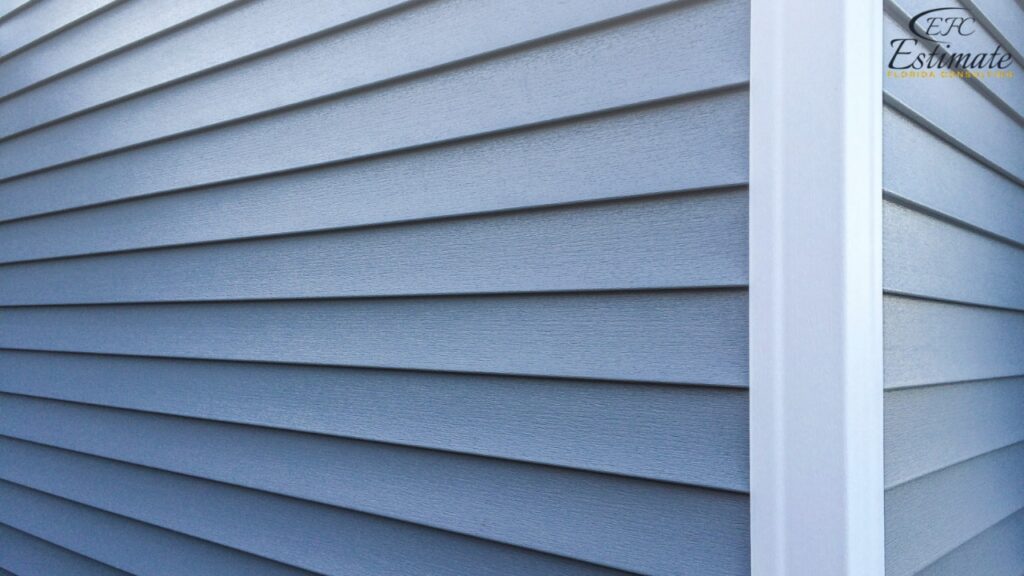
Enhanced Energy Efficiency
New siding, especially when combined with added insulation, can improve your home’s energy efficiency. This can lead to lower energy bills by reducing heat loss in the winter and keeping your home cooler in the summer. Energy-efficient siding materials can create a more comfortable living environment and reduce your carbon footprint. Over time, the savings on energy costs can offset the initial investment in new siding, making it a financially sound decision. Additionally, improving your home’s energy efficiency can make it more appealing to environmentally conscious buyers if you decide to sell.
Increased Property Value
High-quality siding can increase your home’s resale value. Potential buyers are often attracted to homes with new siding, as it suggests that the property has been well-maintained. Investing in siding replacement can provide a good return on investment when it comes time to sell. A well-maintained exterior can also lead to quicker sales and higher offers, providing a competitive edge in the real estate market. Furthermore, homes with new, high-quality siding are often perceived as being more secure and better protected against the elements, which can be a strong selling point.
Protection from the Elements
Siding serves as a critical barrier against the elements. Replacing old or damaged siding helps protect your home from weather-related damage, such as moisture infiltration, which can lead to mold, mildew, and structural issues. New siding materials are designed to withstand harsh weather conditions, providing long-lasting protection for your home. This can prevent costly repairs and maintain the structural integrity of your house. By investing in durable siding, you can ensure that your home remains safe and comfortable, regardless of the weather conditions outside.
Get 5 New Projects in the Next 7 Days With Our System
Conclusion
Replacing the siding on a 2000 sq ft house is a significant investment that can greatly enhance the appearance, energy efficiency, and value of your home. Understanding the various costs involved, including materials, labor, and additional expenses, can help you plan your project effectively and ensure it stays within budget. By considering the benefits of different siding materials and the associated costs, homeowners can make informed decisions that best suit their needs and preferences. Proper planning and budgeting can help avoid unexpected expenses and ensure a successful siding installation. Investing in high-quality materials and skilled labor will result in a long-lasting, low-maintenance siding solution that adds value and curb appeal to your home. By carefully considering all the factors and costs involved, you can achieve a beautiful and durable exterior that will protect and enhance your home for years to come.
Frequently Asked Question
The cost to replace siding on a 2000 sq ft house typically ranges from $22,800 to $64,000. This range includes materials, labor, permits, and additional costs.
There are several types of porcelain tiles available, including:
- Glazed Porcelain Tiles: $3 - $8 per sq ft
- Unglazed Porcelain Tiles: $4 - $9 per sq ft
- Polished Porcelain Tiles: $6 - $12 per sq ft
- Textured Porcelain Tiles: $5 - $10 per sq ft
The cost varies based on the finish and style, with polished and textured tiles often being the most expensive.
Here’s a breakdown of typical material costs for a 2000 sq ft house:
- Vinyl Siding: $3 - $7 per sq ft ($6,000 - $14,000)
- Fiber Cement Siding: $6 - $12 per sq ft ($12,000 - $24,000)
- Wood Siding: $6 - $10 per sq ft ($12,000 - $20,000)
- Brick Veneer Siding: $10 - $20 per sq ft ($20,000 - $40,000)
- Stucco Siding: $7 - $14 per sq ft ($14,000 - $28,000)
- Steel Siding: $8.50 - $14.50 per sq ft ($17,000 - $29,000)
Here’s a comparison of the total estimated costs for replacing siding on a 2000 sq ft house, including materials and labor:
- Vinyl Siding: $22,800 - $38,000
- Fiber Cement Siding: $28,800 - $48,000
- Wood Siding: $28,800 - $44,000
- Brick Veneer Siding: $36,800 - $64,000
- Stucco Siding: $30,800 - $52,000
- Steel Siding: $33,800 - $53,000
- Vinyl Siding: Cost-effective, low maintenance, variety of styles and colors.
- Fiber Cement Siding: Durable, resistant to fire, insects, and rot, mimics wood, stone, or brick.
- Wood Siding: Natural and classic look, requires regular maintenance.
- Brick Veneer Siding: Durable, low maintenance, excellent insulation properties.
- Stucco Siding: Unique and durable, good insulation and fire resistance.
- Steel Siding: Exceptional durability, low maintenance, modern look.
Labor costs can vary depending on the complexity of the project, the contractor’s rates, and the region. Here’s an estimate of labor costs:
- Site Preparation: $50 - $70 per hour ($1,000 - $1,400)
- Siding Installation: $70 - $100 per hour ($14,000 - $20,000)
- Trim and Accessory Installation: $50 - $70 per hour ($1,000 - $1,400)
- Cleanup and Inspection: $40 - $60 per hour ($800 - $1,200)
- Total Labor Cost: $16,800 - $24,000
Additional costs can include permits, inspections, and any custom features or finishes. Here’s an estimate of these costs:
- Permits and Inspections: $500 - $1,000
- Custom Finishes: $1,000 - $3,000
- Miscellaneous Expenses: $500 - $1,500
- Home Size and Shape: Larger and more complex homes require more materials and labor.
- Regional Labor Rates: Labor rates can vary widely depending on your location.
- Existing Siding Removal: Removing old siding can add to the overall cost.

